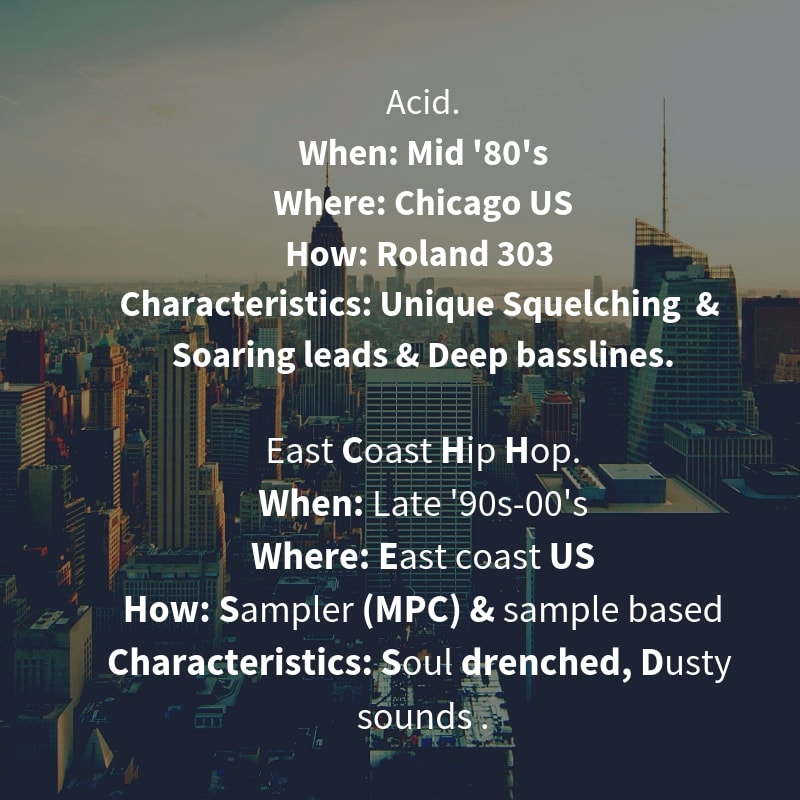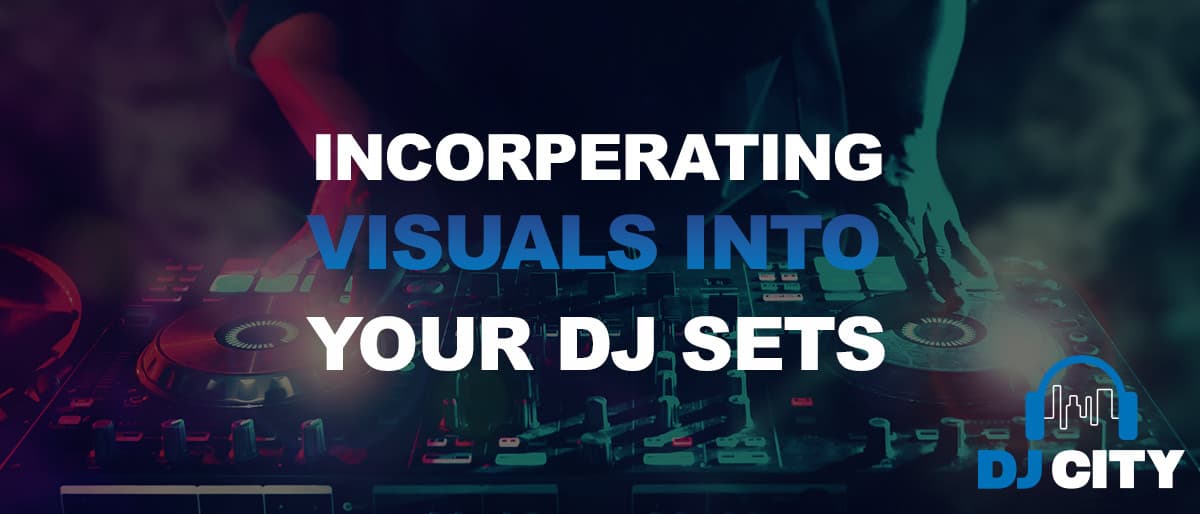
What is Dubstep?
In short…A very large very broad cultural & music movement that has been progressing for 20 years.
Defining genres and then sub-genres is a fiery topic amongst audiophiles. Whether you’re into Deep funk, post-punk, RnB or breakcore… Warehouse techno, witch house, shoegaze, synthwave…
or straight up Dubstep. Straight up? In order to answer the question, we have to dive down the genre rabbit hole and ask what is Dubstep?
Straight up is a fairly ironic term to use when it comes to the genre Dubstep. There is not a lot about dubstep that is straight up, from the wobbles to the beats.
Music is artistic in its nature, this means that classifications and rules are often subjective and controversial, with overlap and grey areas to be avidly discussed. There endless forum’s, subreddits & discussions, full of passionate opinions all over the internet when it comes to splitting hairs within genres & subgenres.
** A subgenre is an offshoot of its parent genre. This mind map shows the offshoots from Soul Music.
Defining Genres?
Popular music has over 1,200 definable subgenres of music!
There are a lot of factors that go into a genre of music, cultural factors play a role, for instance, the cultural context, the content, and spirit of the themes… Then the geographical origin or place of birth can be used to identify a genre, leading to a wide variety of subgenres. The “basic musical language” of every genre comes from the musical form and style. The techniques used in making the music and the technology that is available all shape genres and subgenres.
All of these factors build the rules that define a genre and it’s offshoots.
Here are 2 examples of prominent subgenres, both out of the US:

A great way of exploring the genres is Every Noise At Once An algorithm that has turned the Spotify genres into a scatter map. The soul music map above is taken from Every noise at once.
A super powerful tool that has examples, that lead to related genres, artists and their Spotify pages.
****Every Noise at Once is an ongoing attempt at an algorithmically-generated, readability-adjusted scatter-plot of the musical genre-space, based on data tracked and analyzed for 2,709 genres by Spotify as of 2019-02-15. The calibration is fuzzy, but in general, down is more organic, up is more mechanical and electric; left is denser and more atmospheric, right is spikier and bouncier.
Its pretty rad!
So, What is dubstep?

Dubstep evolved out of a quieter / mellower UK Garage that was losing the glitz & glam/happy/sexy sheen of the late ’90s and moving towards a darker, head down fuelled post-ecstasy downer. It was becoming darker, more introspective, putting more emphasis on heavy bass, on atmosphere, and bringing in dub reggae influences.
*** Meaning of syncopated – displace the beats or accents in (music or a rhythm) so that strong beats become weak and vice versa.
Why is it called Dubstep?
It’s called “dub” because like dub-reggae it was a kind of music stripped down to a slowish and minimal atmospheric drums and heavy bass.
The “step” comes in because it was evolved from, and stripped down from, what was called “2 step garage”. “Steppers” was also a slang term in jungle/drum’ n’ bass music that was part of the same ancestry.
“Step” in this context means something like “dance move” or even “rhythm”.
So “dubstep” means something like “the latest step (ie. rhythm) which is kind of dub-like (ie. slow, minimal, heavy bass)”.
Of course, as the genre evolved towards the end of the 2000s the focus became more and more on the “wobble bass” : a harmonically rich, very loud bass sound which was being filtered and manipulated to make the classic “wobble” / “wah wah” sound.
By the time you get to American “dubstep” of the kind Skrillex and friends produce, both the original rhythm and dubby atmosphere have more or less changed beyond recognition. And the histrionically wobbly bass is everything.
Really, what’s called dubstep these days is that bass design.
Defining Techniques
A key feature of dubstep production is the use of atmospherics and textures to create a full and spacious mix. The use of silence, pads and minor keys builds tension and expresses emotion.
Even though dubstep is dominated by bass and beats, they are softened by a dub reggae‑influenced use of echo, reverb and panoramic stereo to add depth and space.
A great example is Burial, his use of obscure samples, pitch‑shifting and overlaying effects. Burial’s work is very different to the majority of commercially successful and dancefloor‑friendly dubstep tracks and bears a lot of similarities to works by Brian Eno.
Rhythm
Dubstep rhythms are usually syncopated, and often shuffled or incorporating tuplets. The tempo is nearly always in the range of 138–142 beats per minute, with a clap or snare usually inserted every third beat in a bar. In its early stages, dubstep was often more percussive, with more influences from 2‑step drum patterns. A lot of producers were also experimenting with tribal drum samples, such as Loefah’s early release “Truly Dread” and Mala’s “Anti-War Dub”.
In an Invisible Jukebox interview with The Wire, Kode9 commented on a MRK1 track, observing that listeners “have internalized the double-time rhythm” and the “track is so empty it makes [the listener] nervous, and you almost fill in the double time yourself, physically, to compensate”.
Examples of Dubstep Drum Programming:
Basic triplet

Slightly more complex, hip‑hop‑influenced pattern, again with ‘lazy’ kicks, rimshots on the offbeats and plenty of variety in the hi‑hats.

Slightly more complex two‑step, triplet‑feel beat, punctuated by rimshots.

This is an awesome article from Attack Magazines Beat Dissected section that will walk you through the layers and timing of dubstep drums.
Wobble bass
One characteristic of certain strands of dubstep is the wobble bass, often referred to as the “wub”, where an extended bass note is manipulated rhythmically. This style of bass is typically produced by using a low-frequency oscillator to manipulate certain parameters of a synthesiser such as volume, distortion or filter cutoff. The resulting sound is a timbre that is punctuated by rhythmic variations in volume, filter cutoff, or distortion. This style of bass is a driving factor in some variations of dubstep, particularly at the more club-friendly end of the spectrum.
Before the term “Dubstep” was used… Horsepower Productions’ “In a Fine Style” (2002) :
Slightly later, the term dubstep was actually being used. And an early standout hit is Skream’s “Midnight Request Line”
Then there’s Benga and Coki’s “Night”
By Caspa’s “Rubber Chicken” (2006) a clear formula had been established.
What is Dubstep, the Subgenres:
Deep Dubstep often confusingly referred to as just “dubstep” is the first I’ll cover. Deep Dubstep tracks usually feature wobbly basslines and a lot of atmosphere.
Brostep is the American style of dubstep you’re likely familiar with. Brostep tracks are usually 140-155 bpm, and their main feature is their growl-y synths which exist in the mid to low frequencies, and wobble like the deep dubstep basslines (this is called an LFO). The main difference is the focus on spectacle over atmosphere.
Post-Dubstep is the cultural and philosophical advancement of the typical Dubstep sound. It’s an attempt at maturation and forward movement by the intellectuals of the genre. To further this growth, these artists have dropped down from the usual 140 BPM’s to 130 beats per minute as their tempo. They’ve also, in addition to the UK Garage, Drum & Base, Grime, and other electronic genres, have brought in elements of ambient music and even R&B. Check out James Blake and Joy Orbison.
Filthstep is the lo-fi, Super Nintendo cousin of Dubstep. It’s somewhere between Nerdcore and Seattle garage band music. It sounds like a 5th generation copy of a cassette tape half the time. That’s one part of the “filth” term. The other is that its very noisy and rhythmically aggressive and not very melodic. 16Bit is an example of this style.
Drumstep is like brostep, but faster. Tempos in excess of 170bpm allow for more complex drum patterns, and faster oscillating synths can affect their general sound/feeling. Unless your ear is trained on the drum patterns, you’d probably lump these in with the brostep tracks.
Melodic Dubstep mainly features lead synths over growl synths. This is usually used to great emotional effect in well-produced tracks. Think more “shock and awe” over “spectacle” if that helps.
Chillstep is just what it says on the can. Dubstep please, hold the scary bits. I can’t think of a good way to describe this one so have an example.
Wobble is pretty self explanatory, focuses on the wobble containing many wobbly basslines and growls, heavy synthesizer bass line uses smooth pitch bends that drives the low-end of the frequency spectrum. Usually more upbeat or higher energy than deep dubstep. Wobblestep is the most disorienting yet enjoyable sub-genre in the list. Check out Caspa or Ganja White Night and Dirt Monkey
Halftime is essentially the combination of DnB and dubstep as it is drum and bass in halftime. It usually is at 170bpm and sometimes has a slight hip hoppy feel to it. Examples include Vorso and Ivy Lab
Glitch Hop is a combination of growls with styles of funk and hip hop. It sounds kind of glitchy, and is usually around 100 bpm. It may not necessarily be dubstep, but it’s kind of like it’s weird funky cousin. Examples include Koan Sound and Tipper
Riddim is a type of dubstep that has essentially gone back to its roots of very simplistic, repeated rhythms, focusing mainly on sound design. Modern riddim is usually very energetic, and shares some similarities to brostep. It is usually around 150 bpm. Examples include SQUNTO.
DeathStep is exactly how it sounds. It incorporates elements of death metal and is very heavy and dark. Usually has very stabby. Examples include Code: Pandorum
- Filthy Skrillex – Scary Monsters and Nice Sprites
- Deep: Mala – Alicia
- Dark Kryptic Minds & Youngsta – Cold Blooded
- Vocal Deadmau5 – I Remember (Caspa Remix)
- Dubhop Kid Sister – Pro Nails (Rusko Remix)
- 8bit The Widdler – Final Stage
- Glitchstep Samiyam – Roller Skates
- Tribal Dubstep Solen – Lord
What is dubstep in a nutshell…
Syncopated Bass Music, with complex sound design, spattered percussion and atmosphere. Dubstep focuses on the sub frequencies modulating & Brostep focuses on the mid frequencies modulating.
What side of the fence do you sit on?
If your mixing dubstep tunes, this read could be of interest to you 🙂
#dailybeats #donthesitate #musicismeditation






